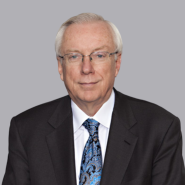Approval of a Drug With An Impurity Is Not Approval of the Impurity as a Drug
- January 23, 2023
- Article
- Life Sciences News - January 2023 Newsletter
Associated People
In Sandoz, Inc., v. Becerra, appeal No. 22-5202 (D.C.C.A 2023) the Circuit Court of Appeals affirmed the FDA’s determination that an impurity in an improved drug was not an approval of the impurity. Sandoz sought approval for a generic corresponding to the drug Aubagio. Aubagio has teriflunomide as its sole active ingredient and is used to treat patients with relapsing multiple sclerosis. When the FDA approved Aubagio on September 12, 2012, it determined that it had not approved teriflunomide in any other drug and that Aubagio was eligible for new chemical entity exclusivity. Generic manufacturers could not submit ANDAs corresponding to Aubagio until September 12, 2016. But Sandoz sought to challenge the exclusivity period and so moved sooner. It submitted a letter to the FDA on August 31, 2016, arguing that the agency had approved teriflunomide and that Aubagio was ineligible for new chemical entity exclusivity. If Sandoz succeeded, it would have been the first ANDA and had a 180 exclusive period because all other ANDA filers, about 20 had waited until the 4-year regulatory exclusivity had expired on September 12, 2012.
Sandoz asserted that teriflunomide was an active component in the drug Arava approved in 1998. Arava uses leflunomide, which the FDA identified as the sole active ingredient in the drug. When Arava is manufactured and stored, however, some of the leflunomide molecules break down into teriflunomide, a similar compound. The FDA characterized teriflunomide as an “impurity” and allowed Arava to contain up to 3.5 percent teriflunomide. Sandoz requested the FDA to revoke Aubagio’s New Chemical Entity designation. In its request Sandoz argued that the small quantities of teriflunomide that build up in Arava contribute to the functioning of the drug, and that teriflunomide was “physically present as a bioavailable and physiologically/pharmacologically active component” of Arava. Sandoz contended that the FDA had “approved” teriflunomide when it approved Arava and therefore that the FDA should rescind new chemical entity exclusivity for Aubagio, which used teriflunomide as its active ingredient. The FDA rejected Sandoz’s request to rescind Aubagio’s new chemical entity exclusivity. Under the agency’s longstanding interpretation of the exclusivity provisions, an ingredient is “approved” in a new drug application only if it was an active ingredient in that drug. The agency concluded it had recognized teriflunomide simply as an impurity in Arava, not as an active ingredient. All the safety and efficacy studies focused solely on leflunomide as the active ingredient. The Arava application did not indicate that the degradant served a therapeutic purpose.
In denying the appeal the Court noted that Impurities are reviewed only to assess whether the manufacturing process is “inadequate to preserve” the drug’s “identity, strength, quality, and purity.” 21 U.S.C. § 355(d). The FDA focuses on whether the impurity undermines the safety or efficacy of the drug but does not otherwise directly study the pharmacological effects of an impurity. The agency may tolerate low levels of impurities when approving a drug. But the limited review does not sanction or approve the impurities, some which may be benign or even beneficial and others which may be toxic or carcinogenic. The FDA only sets an upper level of the impurity that can be present in the approved drug. An impurity’s content in the drug may change over time as with teriflunomide in Arava. The Court considered the development of a drug impurity into an active ingredient to be like discovering a novel active component than finding a new use for a previously approved drug.
While Sandoz offered an interesting spin on what was approved in an NCE and should be recognized for creativity, it ultimately failed and will share the 180-day exclusivity with the other NDA applicants.
Recent Newsletter
5 IP Rules to Know to Protect Your Business in the United States (article in French)
Coaching INPI Newsletter










 Counseling & Strategic Advice
Counseling & Strategic Advice IP Transactions
IP Transactions Litigation
Litigation PTAB Proceedings
PTAB Proceedings Start-Up
Start-Up Technology Transfer
Technology Transfer Trademark & Designs
Trademark & Designs U.S. Patent Procurement (Application Drafting & Prosecution)
U.S. Patent Procurement (Application Drafting & Prosecution)








